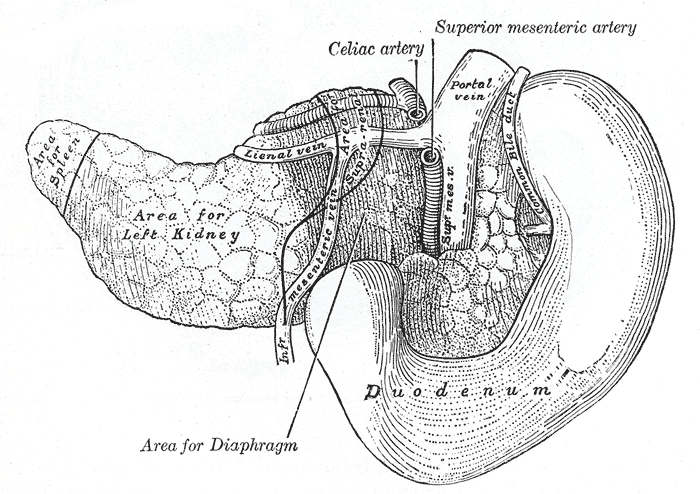Inferior mesenteric vein
| Cardiology Network |
 Discuss Inferior mesenteric vein further in the WikiDoc Cardiology Network |
| Adult Congenital |
|---|
| Biomarkers |
| Cardiac Rehabilitation |
| Congestive Heart Failure |
| CT Angiography |
| Echocardiography |
| Electrophysiology |
| Cardiology General |
| Genetics |
| Health Economics |
| Hypertension |
| Interventional Cardiology |
| MRI |
| Nuclear Cardiology |
| Peripheral Arterial Disease |
| Prevention |
| Public Policy |
| Pulmonary Embolism |
| Stable Angina |
| Valvular Heart Disease |
| Vascular Medicine |
Editor-In-Chief: C. Michael Gibson, M.S., M.D. [1]
In human anatomy, the inferior mesenteric vein (IMV) is a blood vessel that drains blood from the large intestine. It usually terminates when reaching the splenic vein, which goes on to form the portal vein with the superior mesenteric vein (SMV). Anatomical variations include the IMV draining into the confluence of the SMV and splenic vein and the IMV draining in the SMV.
The IMV lies to the right of the similarly name artery, the inferior mesenteric artery, which originates from the abdominal aorta.
Tributaries
Tributaries of the inferior mesenteric vein drain the large intestine, sigmoid colon and rectum and include the
- left colic vein
- sigmoid veins
- superior rectal vein
Additional images
-
The pancreas and duodenum from behind.
External links
- Template:Medcyclopaedia
- Template:SUNYAnatomyLabs - "Intestines and Pancreas: Tributaries of Inferior Mesenteric Vein"
- Template:SUNYAnatomyImage
- Template:SUNYAnatomyImage
